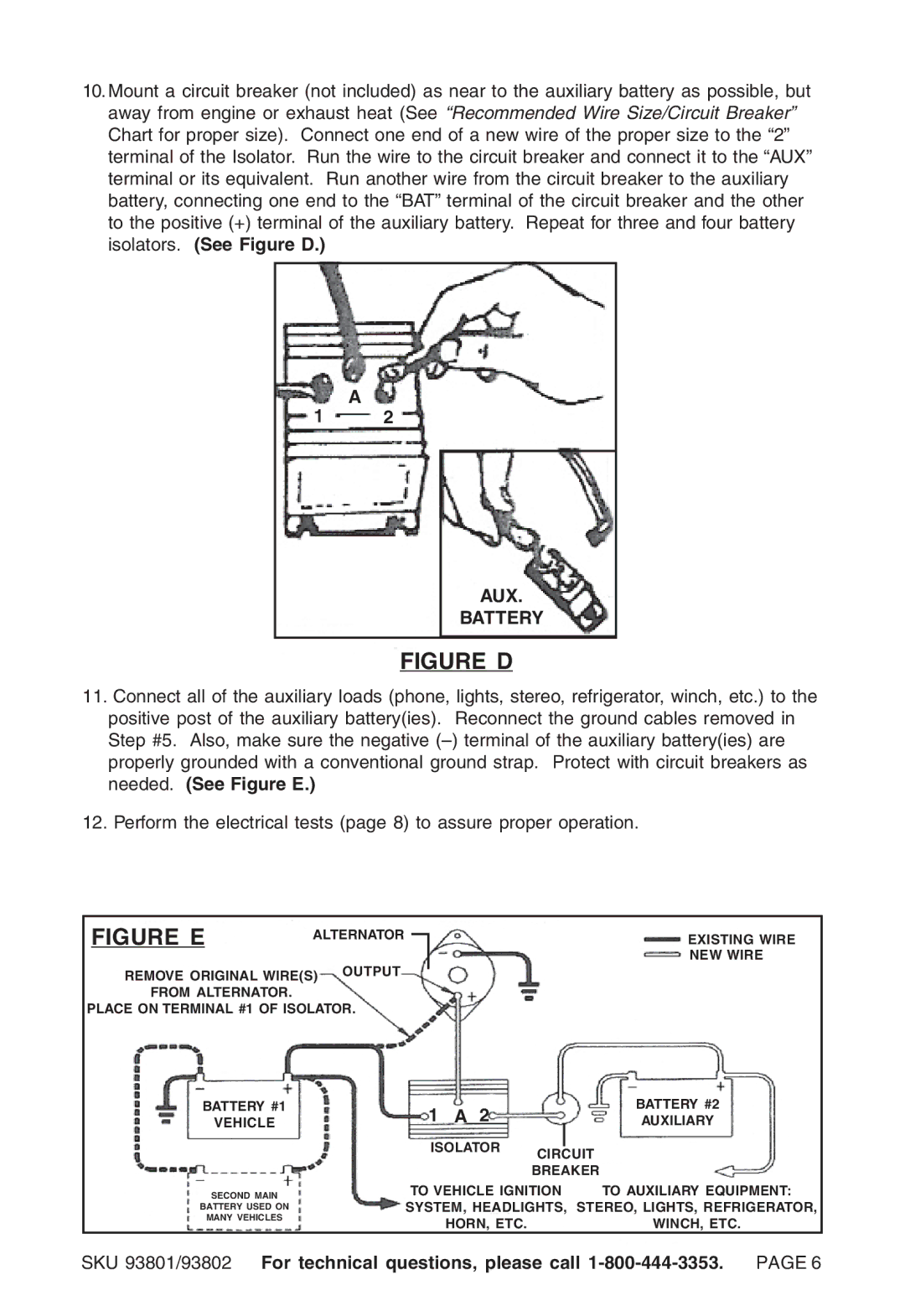
10.Mount a circuit breaker (not included) as near to the auxiliary battery as possible, but away from engine or exhaust heat (See “Recommended Wire Size/Circuit Breaker” Chart for proper size). Connect one end of a new wire of the proper size to the “2” terminal of the Isolator. Run the wire to the circuit breaker and connect it to the “AUX” terminal or its equivalent. Run another wire from the circuit breaker to the auxiliary battery, connecting one end to the “BAT” terminal of the circuit breaker and the other to the positive (+) terminal of the auxiliary battery. Repeat for three and four battery isolators. (See Figure D.)
A
1 2
AUX.
BATTERY
FIGURE D
11.Connect all of the auxiliary loads (phone, lights, stereo, refrigerator, winch, etc.) to the positive post of the auxiliary battery(ies). Reconnect the ground cables removed in Step #5. Also, make sure the negative
12.Perform the electrical tests (page 8) to assure proper operation.
FIGURE E ALTERNATOR
REMOVE ORIGINAL WIRE(S) | OUTPUT |
| |
FROM ALTERNATOR. |
|
PLACE ON TERMINAL #1 OF ISOLATOR. | |
BATTERY #1 |
|
VEHICLE |
|
EXISTING WIRE
NEW WIRE
1 A 2 |
| BATTERY #2 | |
| AUXILIARY | ||
ISOLATOR |
|
| |
CIRCUIT | |||
| |||
| BREAKER | ||
SECOND MAIN
BATTERY USED ON
MANY VEHICLES
TO VEHICLE IGNITION | TO AUXILIARY EQUIPMENT: |
SYSTEM, HEADLIGHTS, STEREO, LIGHTS, REFRIGERATOR, | |
HORN, ETC. | WINCH, ETC. |
SKU 93801/93802 For technical questions, please call
